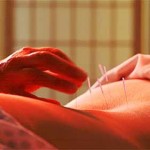Acupuncture historical facts
 Acupuncture, the traditional therapeutic system having its origins in ancient China, is one of the few methods that remained almost unchanged since the time it was created, arousing great interest today in the entire medical community from all over the world. Some data provided by historians leads to the idea that acupuncture was practiced in ancient China long before the art of metalworking, for example. Considering this, acupuncture is perhaps the most primitive form of medical practice. With the technology development, however, the needles were now replaced with ones made of special metals, completely harmless for human body.
Acupuncture, the traditional therapeutic system having its origins in ancient China, is one of the few methods that remained almost unchanged since the time it was created, arousing great interest today in the entire medical community from all over the world. Some data provided by historians leads to the idea that acupuncture was practiced in ancient China long before the art of metalworking, for example. Considering this, acupuncture is perhaps the most primitive form of medical practice. With the technology development, however, the needles were now replaced with ones made of special metals, completely harmless for human body.
Some of the first traces of acupuncture that were found dated back from the Han Dynasty (206 BC - 220 AD), but since then Chinese acupuncture and medicine in general saw some serious improvements. The idea of having a patient observation sheet was also introduced then in order to know the acupuncture points applicable to that patients properly and to analyze the anatomical landmarks better. After this, during the growing development of Confucianism, acupuncture has established itself as a moral obligation, preserving the body intact, leading to a higher rate of surgery rejection and preventing other branches of medicine from flourishing.
In the dynasties that followed, medicine was reorganized, creating a systematic education on specialties. All studies were at that time verified by a written examination, under the control of the General Medical Service, founded in 624. Then the points applicable to acupuncture were known better as well. At that time, the first statues illustrating the acupuncture points were created, helping practitioners perform their job easier.
During the Yuan Dynasty (1271 - 1368) there was a vast poem written by a local wise man, in which acupuncture points were presented and described along with a series of acupuncture techniques. This was also the time when the first ways of communication between certain points and main meridians of the body and their specific symptoms were also discovered. In 1601, among other medical practices and techniques, the characteristics of pediatric acupuncture and veterinary acupuncture were also discovered. After the second half of XIX century, there was a stagnation of acupuncture, culminating with the total ban of traditional Chinese medicine in 1929.
After the proclamation of the Republic of China (October 1. 1949), Chinese medicine takes on a new boom, resulted in the establishment of various specialized institutions. In 1951 it was established in Beijing, Institute of Experimental Research in Acupuncture, which later became the Institute of Chinese Medicine. Finally, each hospital has a department of traditional Chinese medicine nowadays.
